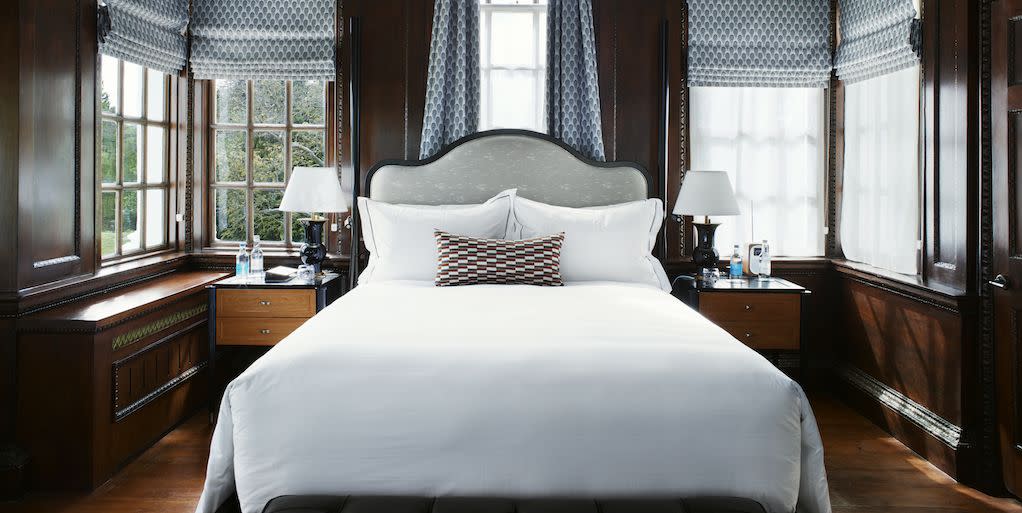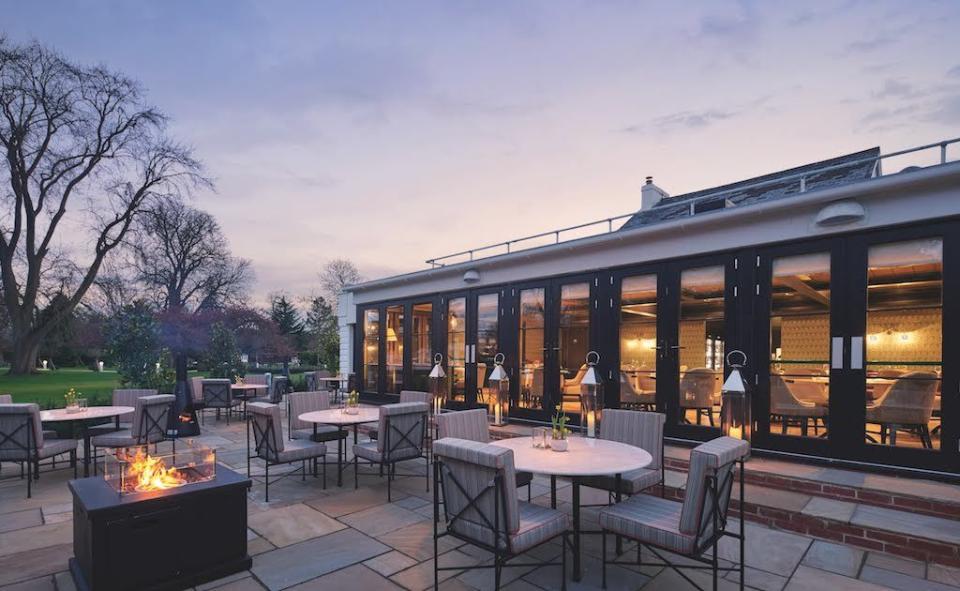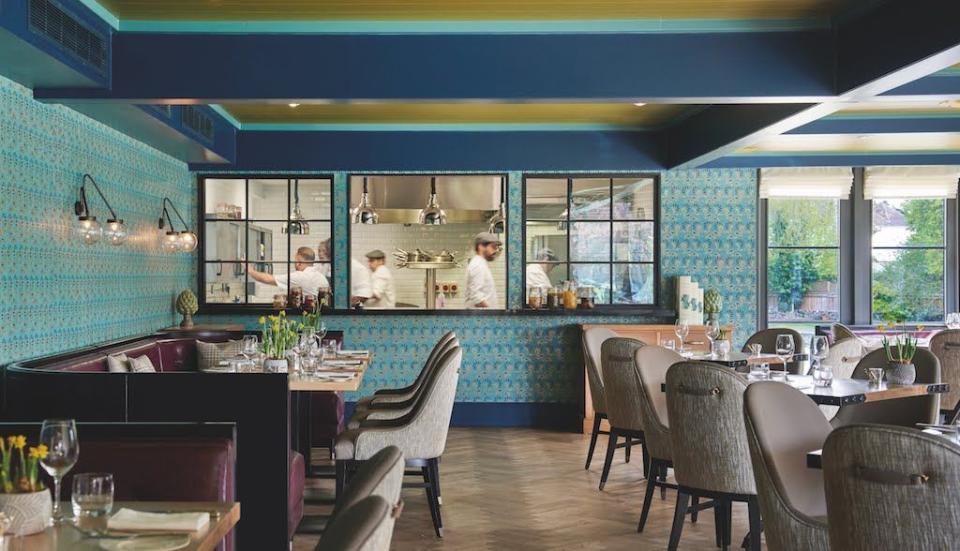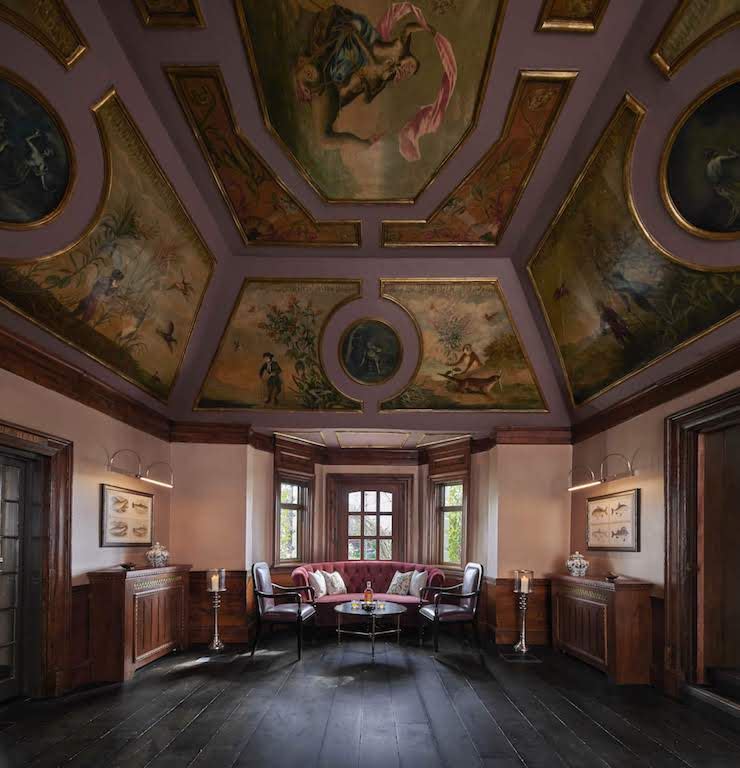This Former Party Island for British Royals is Now a Chic New Hotel

If you have ever wondered what it would feel like to vacation in the manner of a British royal, consider booking a stay at the recently opened Monkey Island Estate. Situated in the middle of the Thames (technically the village of Bray-on-Thames), about an hour by car from London, the seven-acre Monkey Island has been a playground of British high society and celebrities since Charles Spencer purchased it in the mid-18th century as a fishing retreat. Spencer enlisted architect Robert Morris to build the Palladian Temple and Pavilion Lodge there. In the 20th century, convivial guests of Monkey Island (once the provenance of monks, hence its name) included author H.G. Wells and Princess Margaret but eventually, it fell into a state of disrepair.
A few years ago, the Malaysian company YTL began the process of revamping the island’s structures, under the guidance of the New York-based firm (and 2019 ED A-List name) Champalimaud Design. Known in part for their work on other hospitality endeavors, such as The Carlyle in New York and the Four Seasons Jakarta, Champalimaud has renovated the main buildings, creating a 30-room hotel evocative of the island’s past decadence with an eye towards contemporary comforts. Here, Jon Kastl, a partner at Champalimaud, walks us through the design of Monkey Island Estate.

What drew you to this project? What were you most excited about tackling?
The history of the property was certainly the most exciting part. The island has been a retreat for over 800 years. Its most famous owner was Charles Spencer, who was related to Winston Churchill. He acquired the property in 1723 and built two buildings, the Temple and Pavilion Lodge, which are still standing as grade-1 listed structures today. Monkey Island itself is only accessible by a footbridge over the River Thames, which is very romantic. The essence of the place is just so enchanting.
We were excited to tackle the more challenging spaces of the hotel. They make us rethink how we typically design and how we stage rooms. For example, the guest rooms are quite small and we were limited to what we could do because we were working within a grade-1 building. However, the contemporary traveler today is more malleable then in previous generations–they appreciate resourceful ingenuity. So we got creative and designed clever storage solutions such as hanging rods to accommodate long dresses and gowns, mini shelves for personal items, and surfaces for stacking hat boxes–since the property is fairly close to Ascot.

We also made an addition to the original building for the Brasserie, which, in essence, is inspired by a conservatory. The property is historically known for its gardens, so we wanted the interiors to relate to the exteriors. Thus, we incorporated hues and plant types from the gardens, motifs, and decorations. The Brasserie is a really lovely place.
I understand the property was rather rundown when you signed on. How did you go about reimagining it back to life and practically speaking, what were the biggest challenges?
The hotel was in complete disrepair. Our client’s vision to save these historically important and revered buildings was inspiring to say the least. We had to be practical and modest with our level of intervention. We could not make major structural changes; the design had to evolve around what existed.
What were the guides for the color palette and textures you used throughout the renovation?
We took light cues from traditional British design and embraced bold colors and mixed patterns throughout the property. There are some really spirited examples like the Brasserie adorned in a peacock blue, citron yellow, and subdued chartreuse. The ceilings are quite low, and rather than trying to disguise their height, we embraced color to make the room feel even cozier.
The Pavilion Room is another beautiful example of how we incorporated bold colors into the design. The blue is the color of delphiniums and hydrangeas, plant varieties found throughout the property. There is a beautiful lattice pattern that clads the walls, inspired by a garden trellis.

Monkey Island has an illustrious history. How did you honor this legacy, aesthetically, without being entirely married to it? What kind of historical research did you do?
We did extensive research prior. The history of the island is quite well documented, so we were fortunate to have that. The island has been the haunt of monks, monarchs, aristocrats, artists, writers, and famous performers. Much of the property and island’s intriguing history informed our design. For example, the murals in the Monkey Bar inspired a lot of the motif and color choices we used throughout the inn.
We didn’t want it to feel themed, certainly not to be a pastiche. The hotel is contemporary–there are lovely contemporary moments that sit well within the historic interiors. Much of the furniture has classical silhouettes, but was upholstered in a contemporary way.
In what specific ways would you say your design speaks to the 21st century—and a 21st century hotel guest?
In understanding and meeting the expectations of a modern traveler, we added outlets where they needed to be, incorporated large oversize showers in lieu of bathtubs, and installed creative storage in the guest rooms. They are small but thoughtful touches that create comfort and ease while traveling.
You Might Also Like

